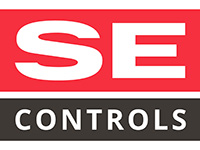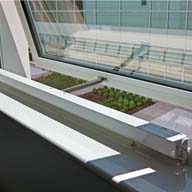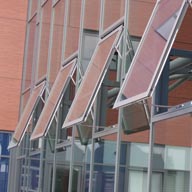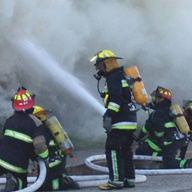The new Priority School Building Programme (PSBP) Facilities Output Specification, launched last October by the Education Funding Agency, proposes some significant, positive and welcome changes to school ventilation specifications, when compared to the existing BB101 standard.
Alongside ventilation and carbon dioxide levels, it also provides clear guides on specific performance standards for thermal comfort while recognising that indoor air quality, ventilation strategy, temperature, humidity and energy efficiency are all intrinsically linked.
However, given that the PSBP is aimed at renewing, repairing and refurbishing some of the country’s most dilapidated schools, the question has to be asked about what happens to those schools that are not especially out of date or in poor repair? Will schools that fall outside the scope of PSBP and its associated funding find that their pupils suffer as ‘legacy’ classroom designs struggle to meet the new standards, particularly for CO2?
Classroom carbon dioxide levels exceed BB101
In the last quarter of 2012, we ran a pilot test with a small number of ‘non-PSBP’ primary schools in the Midlands and Northern Home Counties to gauge the actual level of CO2 in classrooms.
Using our NVLogiQ room controller’s integral CO2 sensor and data-logging function to monitor and record carbon dioxide levels for later analysis, it’s front panel display also acted as a ‘traffic light’ system for teachers, alerting them that the levels were increasing and they should manually open windows to improve ventilation.
When the initial data was analysed in January this year, the headline results raised some significant concerns and were as follows:
• For most days, the daily average occupied CO2 level exceeded the recommended 1500ppm figure in BB101.
• In some cases the CO2 figure was between 2500ppm and 3700ppm on every day of the week.
• BB101’s maximum 5000ppm level was breached four times per week in some cases.
• A maximum reading of 7200ppm was recorded, resulting in the CO2 levels exceeding 5000ppm for almost 3 hours in one case.
While this is a relatively small pilot programme, the results appear fairly consistent and suggest that air quality in schools is probably not as good as it should be. It also raises some general questions about verifying the performance of building ventilation systems in schools.
Clearly the new PSBP output specification sets out to address the issue of CO2 levels, but as some schools are already struggling to comply with the less stringent existing standards, it is evident that any PSBP compliant system must be designed correctly and controlled effectively.
Control is the key
In ‘post-test’ de-briefings, teachers said they were too busy to constantly monitor and respond to ‘traffic light’ signals, so relying on manual opening proved to be unviable due to the intrinsic lack of precise control
Unless automated ventilation solutions are adopted, such as window automation linked to dedicated monitors and controllers or a hybrid mixed mode system to provide additional backup, then it’s likely that children and teachers will continue to work in poorly ventilated and non-compliant schools with the inevitable result of reduced learning performance.
By utilising devices such as NVLogiQ, which can be configured to operate either as a networked system or be dedicated to individual areas, classroom CO2 levels, temperature and energy efficiency can be managed as an integrated set of parameters to provide optimal ventilation while saving energy and money.
Performance monitoring and ‘Soft Landings’
While the value of effective monitoring and logging of CO2, energy efficiency and other parameters provides a constant source of information for analysis and system ‘tuning’, the real benefits come from long term building performance and environment monitoring. This information allows consultants, contractors and school facilities mangers to understand and refine a building’s overall performance.
This facility has even more value within the framework of BSRIA’s Soft Landings programme, which formally establishes a process of managed and extended handover from contractor to owner or occupier to help create a culture of ‘shared responsibility and co-operation’.
A learning environment
PSBP provides a tremendous opportunity to bring our schools up to date with quality facilities and better, more comfortable energy efficient buildings.
It’s evident that the ventilation industry and the education sector have learned a lot since the original introduction of BB101, yet the issues identified in our classroom CO2 pilot study suggest that while there are still some lessons to be learned, the ventilation solutions are already available.
SE Controls’ 30 years of experience in creating and installing natural ventilation solutions in a diverse range of sectors, alongside an ongoing commitment to rigorous academic research, equips us with skills and technologies that can help make PSBP work, while helping improve building performance overall.
Indoor Air Quality In Schools – Is It Making The Grade?
| T | (01543) 443060 |
|---|---|
| F | (01543) 443070 |
| E | info@secontrols.com |
| W | Visit SE Controls's website |
| Lancaster House, Wellington Cres, Fradley Pk, Lichfield, Staffs, WS13 8RZ |
Products by this Company
Categories
Natural ventilation systems




